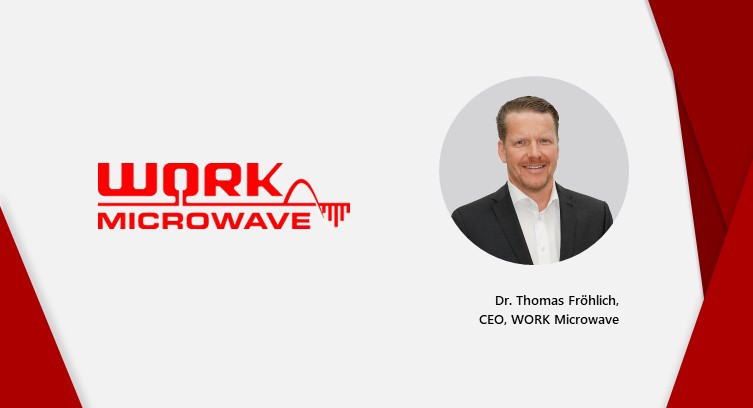Tara Neal, Executive Editor at The Fast Mode ran a brief interview with Dr. Thomas Fröhlich, CEO at WORK Microwave, on the company's plans and expectations for the ongoing AsiaTech x Singapore 2022. Fröhlich also discusses some of the key use cases for satellite and microwave connectivity.
Tara: Do you foresee satellite connectivity playing a bigger role in mobile backhaul connectivity, especially for 5G?
Fröhlich: We definitely foresee a big role for Q/V-band satellite systems for mobile backhauling. This offers higher throughput and data bandwidth, which operators can benefit from when delivering broadband connectivity to rural and remote areas. Indeed, some Q/V-band systems are in use for distributing services over cellular networks. This is very advantageous in areas that don’t have a glass fiber internet backbone. WORK Microwave’s Q/V-Band frequency converters are the perfect fit for serving these types of future applications.
Tara: How do microwave technologies support today's navigation systems such as GPS?
Fröhlich: The GPS and other GNSS signal receivers on Earth, for example navigation devices, must be developed and calibrated according to real microwave satellite signals. For this purpose, powerful microwave-based simulators such as WORK Microwave’s Xidus GNSS Simulator, are needed as they can reliably simulate the received satellite signals at any point on Earth.
Tara: How do digital optical ground solutions support space missions and other space communication use cases?
Fröhlich: One of the biggest advantages of optical links between Earth and space is leaving behind the bandwidth limitations and frequency regulation of conventional RF communications. For LEO satellite systems, such as for Earth observation, optical communication is on the verge of a commercial breakthrough. Feeder links to GEO satellites have also been proven to work with lasers. Even for future lunar exploration or for secure military communication, optical signals are a good option. The prerequisite for these applications is, of course, a smoothly operating network of optical ground stations that guarantees seamless data transfer from space to Earth. Telescopes developed for this purpose, and our Digital Optical Ground Station suite are the most important components.
Tara: Finally, are you excited to be part of ATxSG? What is your key showcases at the event?
Fröhlich: We are very excited to finally be back in Singapore, after two years of the covid-pandemic. On this occasion our focus is not on showcasing this time, but on discussing and listening to our customers and potential customers, their missions, their needs and how we can help them.
Fröhlich has more than 20 years of professional experience in space and security systems. Prior to leading WORK Microwave, he held engineering, project management, and executive positions for the Airbus Group in Germany and France. He has a degree in mechanical engineering and a Ph.D. in engineering from the Technical University of Munich.


















